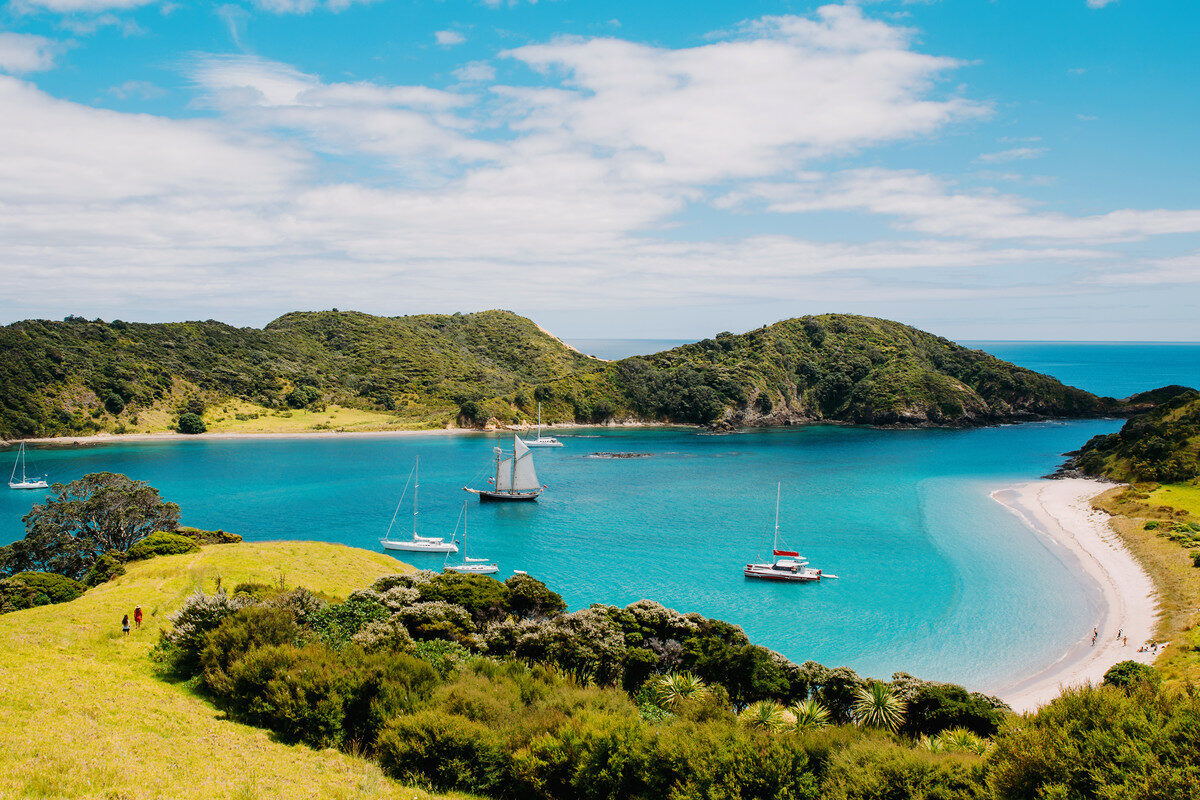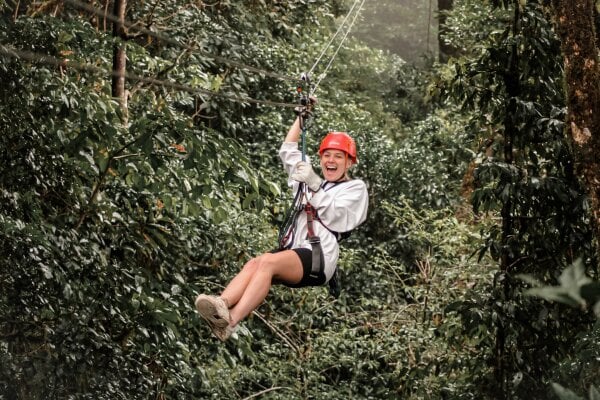Are you torn between choosing Bali or Malaysia for your next vacation? Both destinations have their own unique charms and offer a plethora of experiences.
Deciding between the two can be a challenging task, as they each have their own distinct attractions. In this article, we will explore the differences between Bali and Malaysia based on various criteria, making it easier for you to make an informed decision.
Introduction
Deciding between Bali and Malaysia can be quite a dilemma. Having spent considerable time in both destinations, I understand the challenge of making a choice.
Bali is renowned as the most popular destination in Indonesia, attracting tourists from around the world. On the other hand, Malaysia appears to be a more discreet and less touristy destination. Both places have their own set of advantages and disadvantages. In this article, we will delve into the nuances of Bali and Malaysia, allowing you to choose the destination that aligns with your preferences.
Bali, the Island of Gods
Bali, an island in Indonesia, is located between Java and Lombok and forms part of the Lesser Sunda Islands. Known as the Island of Gods, Bali stands out from the rest of the Indonesian archipelago due to its unique Hindu culture. Unlike the predominantly Muslim country of Indonesia, Bali’s culture is heavily influenced by Hinduism, resulting in a distinct ambiance and traditions.
Bali is undeniably the most touristy island in Indonesia. Travelers flock to Bali from all corners of the globe to experience its enchanting culture and breathtaking landscapes. While Bali is often seen as a separate entity, it is important to remember that it is part of Indonesia. With a larger population, more development, and a vibrant atmosphere, Bali offers a distinct experience compared to its neighboring islands such as Lombok or Flores.
Malaysia, a Lesser-Known Destination
Located north of Indonesia, Malaysia is divided into two territories: the peninsula, which shares borders with Thailand and Singapore, and Borneo, situated on a small portion of the island with the same name. Malaysia is one of the most developed countries in Southeast Asia, yet it remains less touristy compared to its neighboring countries. Despite its lower profile, Malaysia has plenty to offer in terms of charm and activities. From bustling modern cities and ancient colonial towns to diverse cuisine, lush jungles, and picturesque islands, Malaysia is an excellent choice for a rejuvenating and adventurous vacation.
Bali or Malaysia: Where to Go?
Now, let’s delve deeper into the subject and compare the two destinations based on various criteria such as culture, nightlife, tranquility, beaches, activities, comfort, cost of living, and gastronomy. It’s important to note that the goal is not to determine which destination is better, as both countries offer unique and marvelous experiences. The choice ultimately depends on your personal preferences and what you are looking for in a vacation.
Choosing for a Beach Holiday
If you are longing for a beach holiday, both Bali and Malaysia offer beautiful coastal areas. However, they provide different experiences. Malaysia is home to stunning beaches on its islands such as Tioman, Perhentians, and Langkawi. These islands boast white sandy shores, crystal-clear waters, and exceptional underwater ecosystems. On the other hand, while Bali has its fair share of charming beaches like Amed, Lovina, and Megellan, the beaches in the southern region can be somewhat underwhelming. Many of Bali’s beaches are not suitable for swimming due to strong currents, waves, and rocks. Additionally, the sand in Bali is generally golden or black, which may not meet the expectations of those seeking postcard-perfect landscapes.
Cultural Immersion: Bali or Malaysia?
Both Bali and Malaysia have distinct cultures influenced by religion. Malaysia is predominantly Muslim, and the calls to prayer from mosques are a common feature of daily life. Traveling during Ramadan may slightly impact your experience, as the pace of life adjusts to accommodate fasting hours. Malaysia’s culture is relatively modest and bears the architectural legacies of Portuguese, Dutch, and English colonial influences, particularly in cities like Malacca.
In contrast, Bali is a predominantly Hindu island where cultural flamboyance reigns supreme. Balinese people regularly place offerings on the streets and at numerous temples, infusing the air with the scent of incense. Witnessing these rituals is a visual and olfactory delight. Balinese people also frequently participate in temple processions, dressed in ceremonial attire. Temples are scattered throughout the island, some of which are architectural masterpieces.
Bali or Malaysia: Choosing for Nightlife
If vibrant nightlife is high on your list of priorities, Bali is the place to be. Bali offers a wide array of bars, nightclubs, and a lively atmosphere. Alcohol is readily available, making it a popular choice for partygoers.
On the other hand, Malaysia, being a predominantly Muslim country, has limited options for alcohol consumption outside major cities like Kuala Lumpur. The nightlife scene in Malaysia is more subdued and concentrated in specific areas.
While Kuala Lumpur and Penang offer some nightlife options, the overall atmosphere tends to be quieter and more tranquil compared to Bali.
Local Interaction: Bali or Malaysia?
In terms of interacting with locals, Malaysia generally offers a more positive experience. Due to the heavy influx of tourists, interactions with locals in Bali may sometimes feel less authentic. Scams and encounters with rude taxi drivers are not uncommon in touristy areas of Bali.
Tourism plays a significant role in Bali’s economy, and locals are aware of it, which can affect the authenticity of interactions. That being said, Balinese people are generally kind and welcoming, but the level of friendliness in Malaysia tends to be higher.
Both Bali and Malaysia have a good command of English, making communication with the local population relatively easy in both destinations.
For a Quiet and Relaxing Vacation
If you are seeking a quiet and relaxing vacation, Bali’s northern regions offer a more tranquil experience compared to the bustling south. Surrounded by rice fields and jungles, the northern areas of Bali are less crowded and allow you to embrace serenity.
This can be a welcome escape from the noise and traffic that can overwhelm certain parts of the island. Bali has a relatively high population density, and traffic jams are common, so it’s important to consider travel times and plan accordingly.
In Malaysia, life is generally calmer, especially outside major cities like Kuala Lumpur. Once you venture into the countryside, you can find peaceful areas with fewer crowds. However, being in Asia, it’s difficult to completely escape the sounds of scooters and the hustle and bustle of everyday life. Nevertheless, Malaysia offers plenty of opportunities to unwind, especially on its islands or in the midst of its jungles.
For a Comfortable Holiday
When it comes to comfort, both Bali and Malaysia offer a wide range of accommodations to suit various budgets. Bali has an abundance of hotels and villas that cater to different price points, with options available throughout the island.
The quality-to-price ratio in Bali is generally favorable. However, transportation in Bali can be a bit challenging, with traffic jams, chaotic driving, and poorly maintained roads. Traveling around Bali can often be time-consuming and tiring.
Malaysia excels in terms of transportation infrastructure. The roads are well-maintained, and it is convenient to travel in comfortable buses. Renting a car and embarking on a road trip is also a viable option in Malaysia. While accommodation costs may be slightly higher in Malaysia compared to Bali, the transportation system in Malaysia offers greater ease and comfort.
Food Lovers’ Delight
Malaysian cuisine is known for its delicious flavors, although it may not be as diverse as Bali’s culinary scene.
Malaysian cuisine offers staples such as Nasi Goreng, Mie Goreng, and Satay, among others. While these dishes are tasty, the variety of Malaysian cuisine may not be as extensive as Bali’s. Bali, being a tourist hotspot, has seen the emergence of numerous Western-style restaurants and cafes that cater to international tastes.
In Bali, you can find a wide range of cuisines, including pizza, burgers, vegan options, lattes, tapas, and more. Alongside these international options, Bali also offers local dishes similar to those found in Malaysia.
Activities Galore
Both Bali and Malaysia offer a plethora of activities for travelers. Bali is renowned for its surfing opportunities, with world-class waves attracting surf enthusiasts from around the globe.
Snorkeling, scuba diving, hiking, and exploring waterfalls in Bali’s lush jungles are among the popular activities available. Bali is also dotted with temples and terraced rice fields, providing cultural and natural attractions.
Given its larger size, Malaysia offers just as many, if not more, activities. You can engage in scuba diving and snorkeling in some of the world’s most beautiful spots. Embarking on multi-day jungle treks, encountering orangutans in Borneo, exploring the modern capital city of Kuala Lumpur, visiting ancient colonial towns, relaxing on paradisiacal islands, and much more awaits you in Malaysia.
Bali or Malaysia: A Budget-Friendly Vacation?
Now, let’s address the crucial question: which destination is cheaper, Bali or Malaysia? Based on personal experiences and expenses, Malaysia tends to be less expensive than Bali.
In terms of accommodation, both Bali and Malaysia offer a range of options to suit various budgets. Malaysia provides very decent accommodations at affordable prices, with options available for as low as 10-15 euros per night. In Bali, accommodations are abundant and range from budget guesthouses to luxurious resorts, with prices exceeding 20 euros per night.
When it comes to meals, Malaysia offers more affordable options. Local food in Malaysia is reasonably priced, typically costing around 2-3 euros per person. In Bali, prices are generally higher, and the prevalence of foreign restaurants often leads to increased costs. A simple Nasi Goreng that costs 1.5 euros in Malaysia may be priced at 2 euros or more in Bali. It’s essential to note that Bali offers a wider range of culinary choices, including both local and international cuisines.
Activities and transportation tend to be more expensive in Bali. Diving in Bali, for example, usually costs around 30 euros, while comparable experiences in islands like Tioman or Perhentians in Malaysia may range from 20 to 25 euros. Renting a surfboard in Bali for beginners costs around 3 euros for two hours. In terms of transportation, Malaysia offers more affordable options, with cheaper scooter rentals and bus fares compared to Bali.
Conclusion
Armed with this information, you should be better equipped to choose between Bali and Malaysia for your next vacation. Both destinations offer their own unique experiences, and the decision ultimately depends on your preferences.
Whether you seek tranquility, cultural immersion, stunning beaches, diverse activities, gastronomic delights, or local interactions, Bali and Malaysia have much to offer. If you are still unsure, consider reading our article on choosing between islands in Malaysia or Indonesia for additional insights to assist you in making your decision!



 Maultasche
Maultasche















 I’ve never been a big fan of the phone and even today, more than a month after returning home; I still don’t have a mobile phone number.
I’ve never been a big fan of the phone and even today, more than a month after returning home; I still don’t have a mobile phone number.
